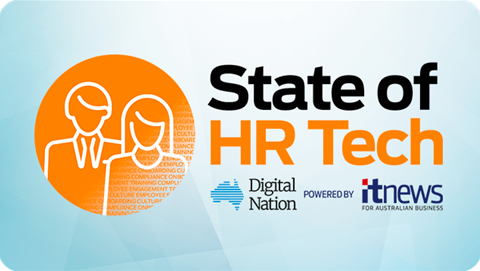Image: Calvin Lynch, General Manager (ANZ), Liferay

Content sponsored by Liferay.
The need for connected, user-friendly digital experiences is greater than ever – not only for customers, but also for employees.
So says Calvin Lynch, General Manager (ANZ) at Digital Experience Platform (DXP) company Liferay. He sees good employee digital experiences as vital during the pandemic.
But what is a good employee digital experience? We asked Lynch about this and about what the pandemic means for digital strategy.
Many companies are doubling down on digital transformation to pivot away from the pandemic’s disruption. How has this affected your business?
Liferay is lucky enough to be among the companies who provides services that can benefit other organisations during this challenging time. This is because the solutions we provide focus on digital transformation, such as workplace transformation to empower employees to work from home. This pandemic has forced companies to find a new, digital way to meet the demands of their customers and employees and that is exactly what Liferay’s DXP offers.
How did your early working experiences shape the way you connect with business customers?
Around 20 years ago I studied software engineering back in the UK, and realised that I enjoyed the analysis and design phase of the problem solving – and that I didn’t like cutting code.
I started a career in sales with the aim of building business acumen so I could understand business processes end-to-end. My full-time job became solving problems, and that brought tremendous satisfaction. Ultimately that led to conversations around putting customers and employees at the centre of everything we do – and COVID-19 has been a catalyst for those conversations.
I have spent the past 10 years working with organisations, helping them through digital transformation and enabling this through technology. Digital experiences are no longer ‘like to haves’; they are ‘must-haves’.
Many legacy digital services were mostly designed just to get the business online. How can a review of DXP strategies help businesses connect with customers in the ‘new normal’?
One of the reasons I chose to join Liferay is that we’re not just shoehorning a platform into a business. We’re working with customers about how to put their customers and employees at the centre of their businesses, while understanding that they have resourcing challenges to do more with less. This means mapping out digital customer journeys more than simply enabling them with technology.
It’s really about stripping it back, and understanding from the C-suite about the key strategic initiatives that are top of mind in light of COVID-19. It might be OK to say ‘we don’t know’ or ‘we are still assessing’. We work to uncover the challenges between front-line teams, then to educate the C-suite about mitigating those gaps with technology. And good employee experiences seem to be the backbone of those.
What makes for a good employee experience, and how has this changed during the COVID era?
To put customers at the centre of the business, it’s not just about what the customer sees - think of the iceberg principle; it must also be about your back end, so that employees can keep pace with changes in the business. As employees are required to do more with less, and on top of that possibly all still working remotely, you need to make sure those people are happy and empowered.
This means putting employees at the centre of the business, which is always easier said than done. Large enterprises usually have many legacy systems running and on top of that, teams built around those systems, so the challenge becomes making that reality possible and managing change across so many people.
Our work with the NSW Department of Education, for example, has enabled more than 1.2 million students, and teachers and parents, to access everything from timetables to reports to teachers’ annual leave balances. This is all helping to put them at the centre of efficiency operations, and to ease some of the administrative burden for teachers that are working from home in many scenarios.
If there is a change, the customer experience has to be able to mirror that. If you increase employee satisfaction, typically there is an increase in customer satisfaction. You’re trying to create customer centric experiences, but to factor in the employees too.
What will define ‘customer centric’ business in the future?
The change has to be one of attitude, in which companies look at data not as a resource to sell more product, but as a way to add value. Leveraging artificial intelligence, machine learning (ML) and other technologies to meet customers where they live in the digital domain is incredibly important.
Success is based on the companies building a holistic profile of who I am as a prospective buyer, then continuing to support me and provide value post the sale. Those are the kinds of customers that stay with you for years.
Particularly if you help them get through something as problematic as COVID.
Yes, and if you do it with genuine empathy and navigate as a business leader. Organisations appreciate that and those vendors they see as providing value are the ones they will continue to work with.
Things like ML need to get a lot wrong before they get things right, and this takes trial and error. However, we cannot rely on technology like this to solve customer experience challenges. AI, data and automation need to be used in a meaningful way to improve the customer experience. The key is to start by actually caring about customers and not just trying to sell them things and then see how technology can help support that.
What is the biggest challenge for companies as they push through COVID-19’s disruption?
The biggest risk as we adapt to the new normal is losing good people. Empathy, trust, and clarity are going to shine through during this period. Acknowledge that life happens during the workday, and that people should make the most of the remote working environment as long as they remain focused on their outcomes. Once you trust your employees, that should solve a lot of the challenges, but it’s also important to find new ways of engaging people as a team and put in that extra effort to help avoid the feeling of isolation.


.png&h=140&w=231&c=1&s=0)
_(20).jpg&h=140&w=231&c=1&s=0)





_(26).jpg&w=100&c=1&s=0)

 iTnews Executive Retreat - Security Leaders Edition
iTnews Executive Retreat - Security Leaders Edition












_(1).jpg&h=140&w=231&c=1&s=0)



